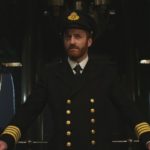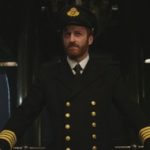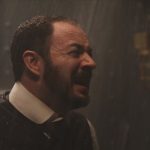Productions Saving the Titanic
Saving the Titanic
1 x 90 min (2 x 50 min for TV) HD drama-documentary
100 years after the sinking of the Titanic, Saving the Titanic is the untold story of the self sacrifice and dignity of the ship’s engineers,stokers and firemen in the face of impending death.
Credits
- Executive Producer – Stephen Rooke
- Co-Producer – Keith Farrell
- Co-Producer – Reinhardt Beetz
- Director – Maurice Sweeney
- Writer – Lyall Watson
- Writer – Colin Herber-Percy
BROADCASTERS:
- Aetn/History Uk , RTÉ , ZDF , Zdf Enterprises
She was the pride of the British Empire. A leading example of state-of-the-art engineering in a time of groundbreaking scientific and technological innovations on a global scale: the RMS Titanic. Yet she sank in less than three hours after striking an iceberg on 14th April 1912. We all know about the many deaths in the icy waters, the fates of the rich and famous on the ship’s maiden voyage and the dramas that played out in the Titanic’s last hours. What is less known however is how a team of shipbuilders and engineers attempted to save the stricken vessel.
Seeking to answer the question of what happened in the engine and boiler rooms after the collision, Producer Stephen Rooke’s and Director Maurice Sweeney’s film ‘Saving the Titanic’ tells the story of the disaster from below deck, with the action taking place between the time the crew embark the Titanic at Southampton and the eventual sinking of the ship. Narrated by leading Irish actor Liam Cunningham and based upon eye-witness accounts, this is the remarkable story of nine central characters from the engineering crew as they work among the huge, coal-fired furnaces heating the boilers and massive dynamos whirring to satisfy the ship’s demand for electricity. These nine men – among them leading fireman Frederick Barrett, chief engineer Joseph Bell, Sligo man electrician Alfred Middleton, assistant electrician William Kelly from Dublin and 18-year-old electrical engineer Albert Ervine from Belfast – are the heroes of this epic film. Their personal stories of bravery are recounted as the men fought courageously to hold back the power of the sea and keep the power systems running, even when they learned that all was lost. Most of these men died but their actions saved many lives.
Underscoring the superior quality of this drama-doc are the informative yet never overbearing technical details, the stunning CGI and the high-end drama shot in Ireland and the UK that bring to life the last hours of the “unsinkable” Titanic. Indeed, one of the most exciting elements of this film is the CGI & VFX work, which includes partial as well as full CGI shots.
The film has already garnered critical acclaim, with the Director of the Jameson Dublin International Film Festival GráinneHumphries, hailing it as “unmissable”.
Director, Maurice Sweeney says that Saving the Titanic gives a “human face to what happened below deck. The script and story are essentially a look at heroism and how men reacted in different ways.”
“I knew this film would be a real opportunity to bring this untold story of the Titanic to the screen for the first time” says producer Stephen Rooke. “This story has never been told in a drama documentary; that’s what makes this film unique and why I spent two years of my life putting it together. Our original approach to this story is the reason why RTÉ, ZDF, History and the Irish Film Board came on board.”
The concept for this unique drama-documentary was the brain child of Keith Farrell, one of the co-producers of Saving the Titanic, who first came across the stories when talking to old shipyard workers in Belfast in the mid 90’s. “I was very moved by what I heard and determined to someday give voice to the men who died below deck”.
The script was written by leading screenplay writers Lyall Watson and Colin Heber Percy (Casualty 1909 / 1907 / 1906, Sharpe’s Choice, Rome: Constantine, & Krakatoa: The Last Days).
Saving the Titanic has a stellar ensemble cast of leading Irish actors in key roles in this drama-doc including David Wilmot (The Guard; The Tudors), CiaránMcMenamin (One hundred mornings; Sinking of the Laconia; David Copperfield Primeval), Owen McDonnell (Mount Pleasant; Singlehanded; Conspiracy of Silence) Jonathan Byrne (Primeval; On Home Ground; Fág an Bealach); Andrew Simpson (Notes on a Scandal; Perrier’s Bounty), Hugh O’Conor (Your Bad Self; Killing Bono); Douglas Rankine (Loose Talk), Paul Kennedy (Cherrybomb; 50 Dead Men Walking), Stephen Hogan (Earthbound; The Tudors), ConorMacNeill (Cherrybomb; 50 Dead Men Walking), and Chris Newman (Love/Hate; Love is the drug); Owen Roe (Wide Open Spaces; Whistleblower; Alarm) and David Heap (The Guard; Jack Taylor; The Tudors).
Shot on Red Cameras, Saving the Titanic features large-scale, high-end drama re-enactments with extensive use of CGI created in Windmill Lane Pictures to bring to life the last hours of the “unsinkable” Titanic. Production commenced in mid-August 2011 filming in Kempton Steam Museum and in Ardmore Studios with purpose built sets, employing more than 100 crew members and featuring over 50 extras.
Saving the Titanic was produced by Tile Films in Dublin and is a co-production with GebruederBeetzFilmproduktion in Germany, produced in association with BordScannánNahÉireann/Irish Film Board, RTÉ, Broadcasting Authority of Ireland – Sound and Vision Broadcasting Funding Scheme, Windmill Lane Pictures Ltd., Section 481 – Ireland’s Film Investment Scheme, AETN/History UK, ZDF and ZDFE Enterprises. International distribution is handled by ZDF Enterprises.





